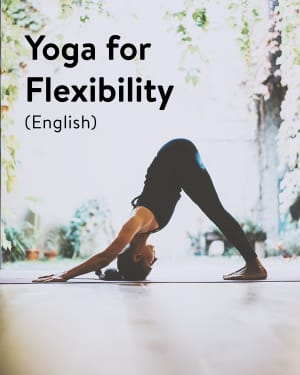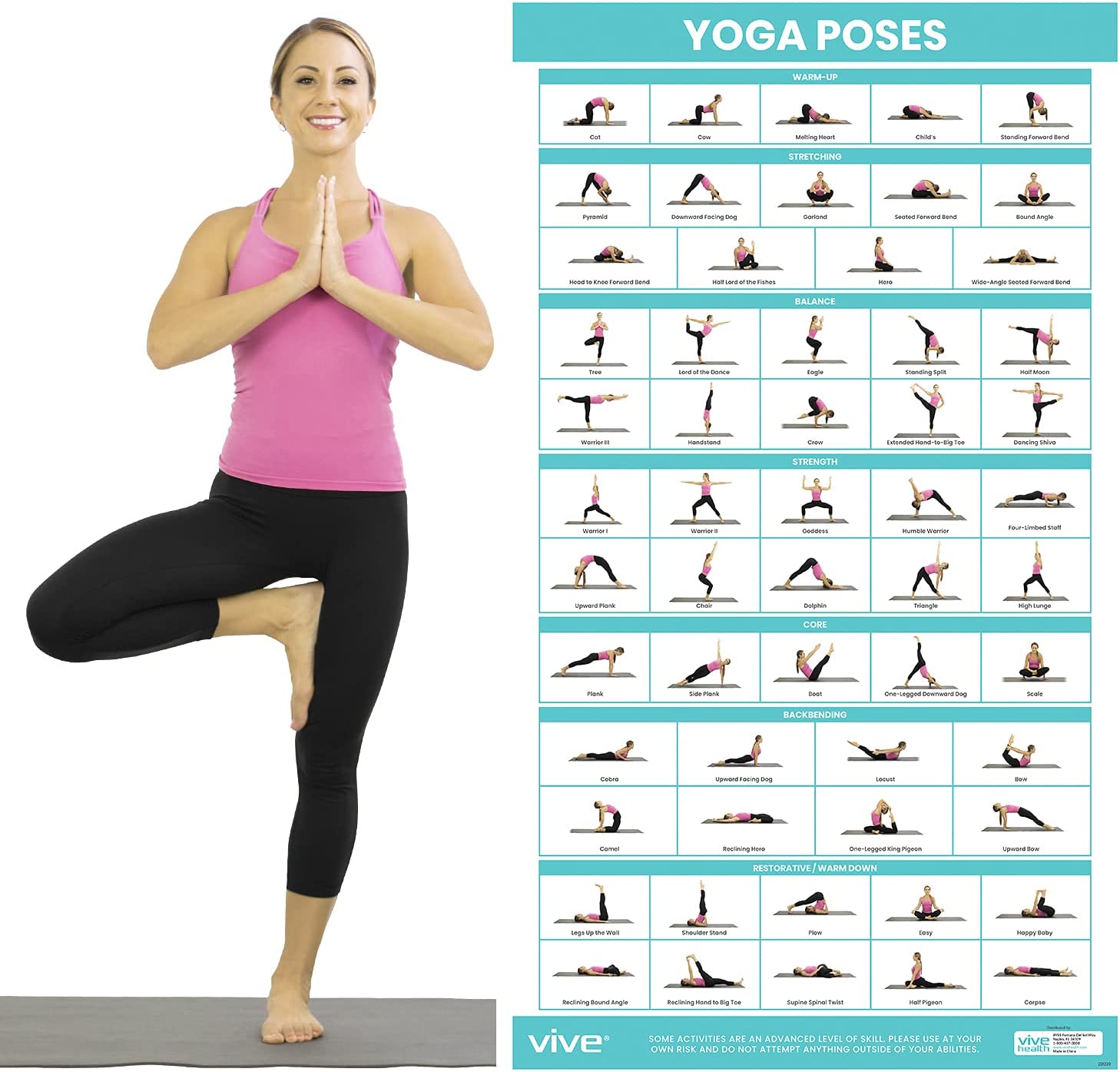
One of the most basic yoga poses for beginners is the standing leg raise. Stand with your legs straight and your feet apart. One hand should reach the sky and the other one to your fingertips. Keep your hands shoulder-width apart. The pose is beneficial for your back, thighs, and hamstrings, while toning your legs and building core strength. You should practice this posture for about six to eight times before you're able to perform it properly.
The staff pose can be compared to the mountain position, but it is a seated version. It allows beginners to get used the alignment principles that are required for seated poses. To perform this asana, you need to engage your leg muscles and lift your chest, while relaxing your shoulders. This will allow you to relax your shoulders, which will lead to a gentle bend in your knee. You can also adjust the position by placing something on top of each knee.
The down-facing-dog position is a great way end to a yoga practice. This pose is a great place to begin if you are just starting out. Keep your hips lifted and point your toes towards the floor. It doesn't mean you have to touch or feel the floor. However, this can help stretch the outer hips. For a more comfortable experience, bend your knees so your hips remain parallel.

The corpse poses is a great choice for transition poses. Bringing your body to a still state is a challenge for a beginner, but it gets easier with time. You can get the most from your yoga practice by giving yourself ample time and taking a few minutes every day to review your posture. As your practice progresses, you will see both physical and mental benefits. Yoga practice every day has immense benefits.
The most popular pose for beginners is the triangle position. It strengthens the chest, hamstrings, as well as improves posture. This is a great starting point for anyone who wants to learn yoga. Apart from the triangle, the Seated Spinal Twist for beginners is another popular yoga position. This stretch helps strengthen the legs while strengthening the spine and upper back. It also helps to strengthen the back.
The twist pose can be a great introduction to twists in yoga. The twists increase the length of the bottom leg and reduce back tension. If you're prone to back pain, this pose may be difficult, but it will help you build your back and strengthen your legs. This pose is great for beginners. You can start by learning the child's pose if you aren't sure where to start. Once you learn the cat, you'll be able to do it in any position.
Forward bend is a good position for beginners. It's an all-over stretch, which helps stretch the hamstrings and calf muscles. One of the most basic yoga poses, the bridge, should be your focus during a yoga session. It will help improve your flexibility, balance, and balance. It can be difficult for someone who isn't well-versed in yoga. But you will be able to do this pose with the support of a teacher.

Beginners should learn to do the child's position. This will give you a solid base of strength, and help improve your body alignment. Many of the poses in yoga for beginners can be used together. It is important to begin with the basics before you move on to more advanced poses. Keep practicing! Remember that these poses are not for beginners. You can modify them to your liking.
The popular beginner yoga pose is the downward dog. This pose is meant to strengthen the back. You can make this pose more comfortable by stretching your shoulders and thighs. Next, extend your arms out to the sides and then let go. Keep the pose in place for at least thirty seconds. To improve your movements, you may also want to try other versions. You can practice these poses until you become proficient.
FAQ
Are there any benefits to practicing yoga?
Yoga has been around for thousands of years and is now very popular. It is now very popular among celebrities and even ordinary people who want to look fit and healthy.
Yoga is great because it stretches your muscles while strengthening them. It can help you relax and calm down.
Yoga and other forms exercise differ in that yoga is focused on breathing techniques.
Different poses can be practiced to increase flexibility and balance.
Can I go to the gym 7 days a week?
You can go to your gym seven days a semaine, but not simultaneously. You must find a time you can do it without feeling exhausted and depleted.
This will help you stay motivated and keep you energized for other activities.
You should also ensure that your meals are well-balanced. This will ensure that you aren't tired and slow when you go to the gym.
And lastly, you need to ensure that there isn't anything else competing for your time. You might want to avoid working out on school nights if you have kids. They can distract you from your exercise routine.
How many calories per day should I consume?
This can vary from person to person. An average person needs 2000-2500 calories per day. It is important to consider your lifestyle and determine how many calories you'll need.
Do I have to exercise every single day?
No! You should do at least 30 mins of moderate-intensity activity 5 days per week. This could be walking fast enough so you feel slightly out breath or cycling hard enough to sweat.
How fast can my body be transformed?
It all starts by changing your mindset. The first step is to decide to change.
After you have made the decision to change, you should commit to working towards your fitness goals for at minimum 3 months.
Then you need to find a program that fits into your lifestyle.
You also need to set realistic expectations. Don't spend your hard earned money on a gym membership if you don't have the motivation to work hard.
Instead, make use of your time outdoors.
If you spend an hour a day walking around the block, you'll burn enough calories to lose 1 lb per week.
Once you know what your plan is, it's time to start organizing your life in accordance with this plan.
It is important to set aside time every day for exercise before going to work. You can also take breaks throughout each day to get up and move.
Finally, you should reward yourself when you reach milestones. You might be able to buy clothes and accessories that reflect your accomplishments.
Statistics
- According to the American Heart Association, blood pressure should be checked at least once every two years, beginning at age 20. (my.clevelandclinic.org)
- 10 pounds in a month is likely during a lean bulking phase, especially for beginners. (muscleandstrength.com)
- According to the American Academy of Dermatology (AAD), men over 50 are at a heightened risk of developing it. (healthline.com)
- By John Thompson Take a whopping 38% off a set of PowerBlock Pros. (menshealth.com)
- Candidates and applicants must pass all four tests at 70% (minimum level) to graduate from Basic Deputy U.S. Marshal (BDUSM) Training. (usmarshals.gov)
External Links
How To
How to Eat Well with Men
Smaller meals are better than three large meals spread out over the course of the day. Smaller meals will allow you to spend less time eating and digesting food. You'll be less likely to overeat later.
Avoid snacking prior to bed. Do not eat after midnight. You may wake up hungry and overeat next day.
A light snack is a better choice.
Avoid snack attacks. This is when you grab something to munch on whenever you feel hungry. This is particularly dangerous if your weight is already high.
Make sure that all of your meals are balanced. Don't skip breakfast. Make sure to eat healthy lunches and dinners.
Cut back on calories if weight loss is a problem.
You can cut out caffeine, alcohol, and nicotine. Both can impact the way your body processes nutrients.
Get plenty of sleep. Sleep deprivation makes people crave junk food.
Exercise regularly. Exercise can boost your mood, improve energy levels, and reduce calories.
Take care of yourself mentally. Stress can cause weight gain and overeating.
Relax. Meditation and yoga can help with anxiety and stress.
Keep track of everything you eat. Write down everything that goes into your mouth.
Supplements are important! The majority of men don’t get enough vitamins, minerals and nutrients to remain healthy.
You should take a multivitamin each day. A multivitamin every day can help to prevent certain key vitamins or minerals from becoming deficient.
Consider taking vitamin C supplements. It protects against scurvy by strengthening your immune system.
Include zinc in your daily diet. Impotence can be caused by zinc deficiency.
Water is essential. Limit your fluid intake to 1.5 liters daily (about 4 cups).
Limit salt. Reduce salt intake.
Avoid trans fats. Trans fat has been linked with higher obesity, diabetes and heart disease rates.
Best male enhancement pills for 2018 - Best Male Enhancement Pills Reviews
There are many options for male enhancement. Some of them work well, but others fail to deliver any real results. This article aims to give you some information about the best male enhancement pills that actually work.